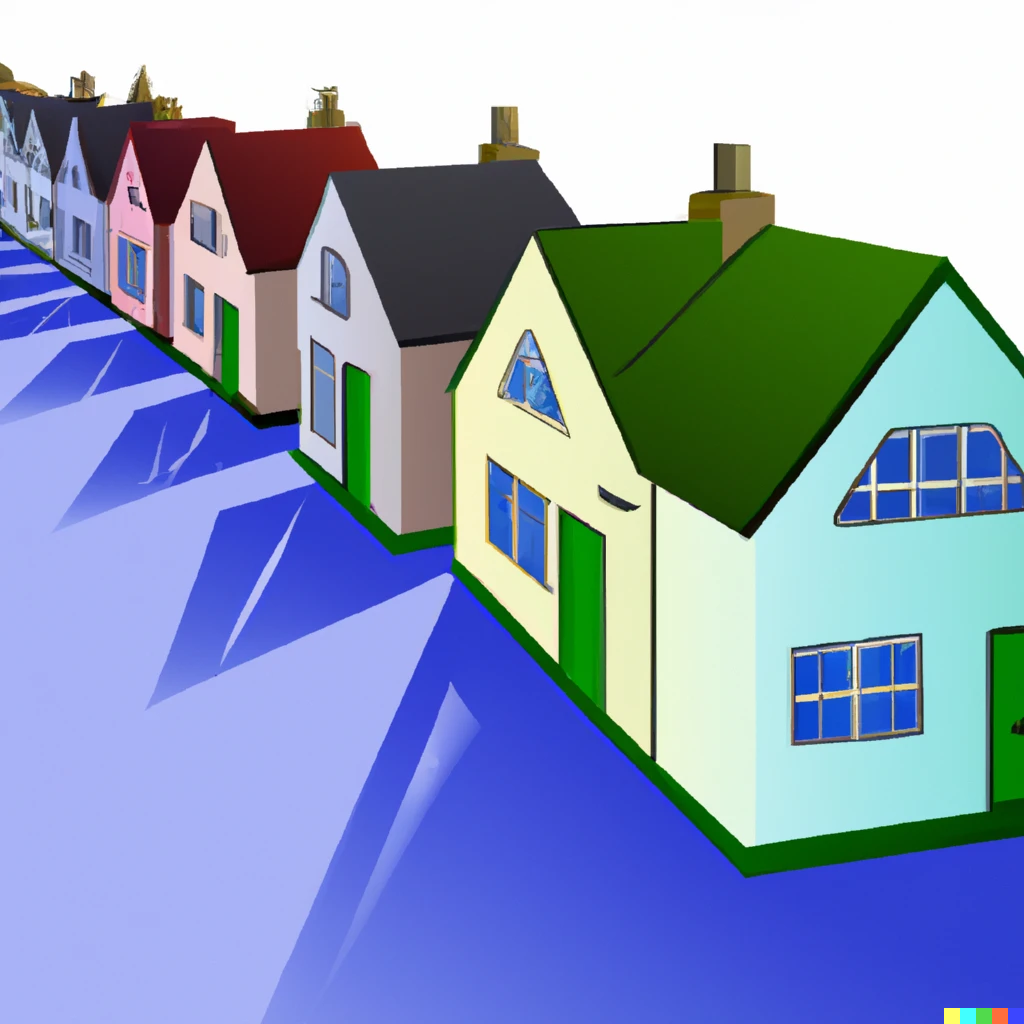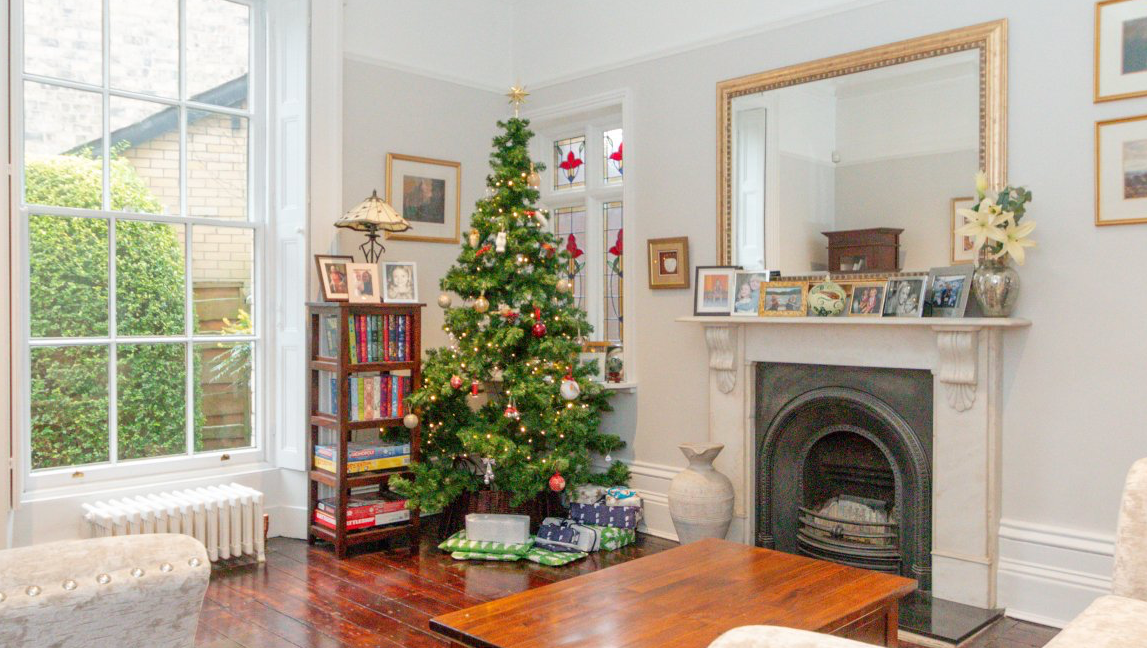iViewProperty News
Video In Property

If you've read part 1 of this blog you'll be aware that the people who know most about consumer engagement (social media companies like Facebook & Twitter) are increasing their use of video because they've found it's what we like to watch and engage with, and what your local market prefers. So you should be using video to market your properties, but what should you consider when filming your own, or looking for a supplier to produce video tours that buyers will watch? As in part 1, we keep coming back to engagement - will potential buyers watch (enough of) your video? Too slow/long and viewers will very quickly switch off (we’re much less patient than we used to be). On the other hand, your video has got to show enough of the property so that they have a good ‘feel’ for it, and can decide whether they want to move on to the next stage & arrange to visit the property with you. Spending more time focusing on important areas whilst moving more quickly in the hall or going up the stairs etc. is generally a good rule. The next point to consider is more complex. You want the video to be ‘easy’ for the viewer to watch. You might ask how hard can watching a video tour really be? But if you feel like you’re about to walk into walls whilst swinging left & right, and permanently looking at the floor, as is the case with many DIY property videos, you’ll see what we mean. Filming watchable property videos is a skill that must be developed over time. How will you know if viewers are finding your videos engaging? The best way to check is looking at the average viewing time for each video … how long are people watching for? It’s easy to find this on hosting platforms like Vimeo & YouTube, but what sort of figure should you expect? Around 75% is a good target - much less than that is a sign that viewers are switching off too early. Assuming that you’re distributing your videos via the right channels … your website / property platforms / to your matched applicants list etc. you should really be getting close to this figure. (It’s worth uploading video tours to social channels too, but those aren’t targeted views, so don’t expect the same average watch time). It is possible for estate agents to film video tours to a standard that viewers will watch, but for many it’s a skill that takes too long to master in the first place, and too much out of your day to film/edit/distribute etc, when you should be winning instructions & selling homes.
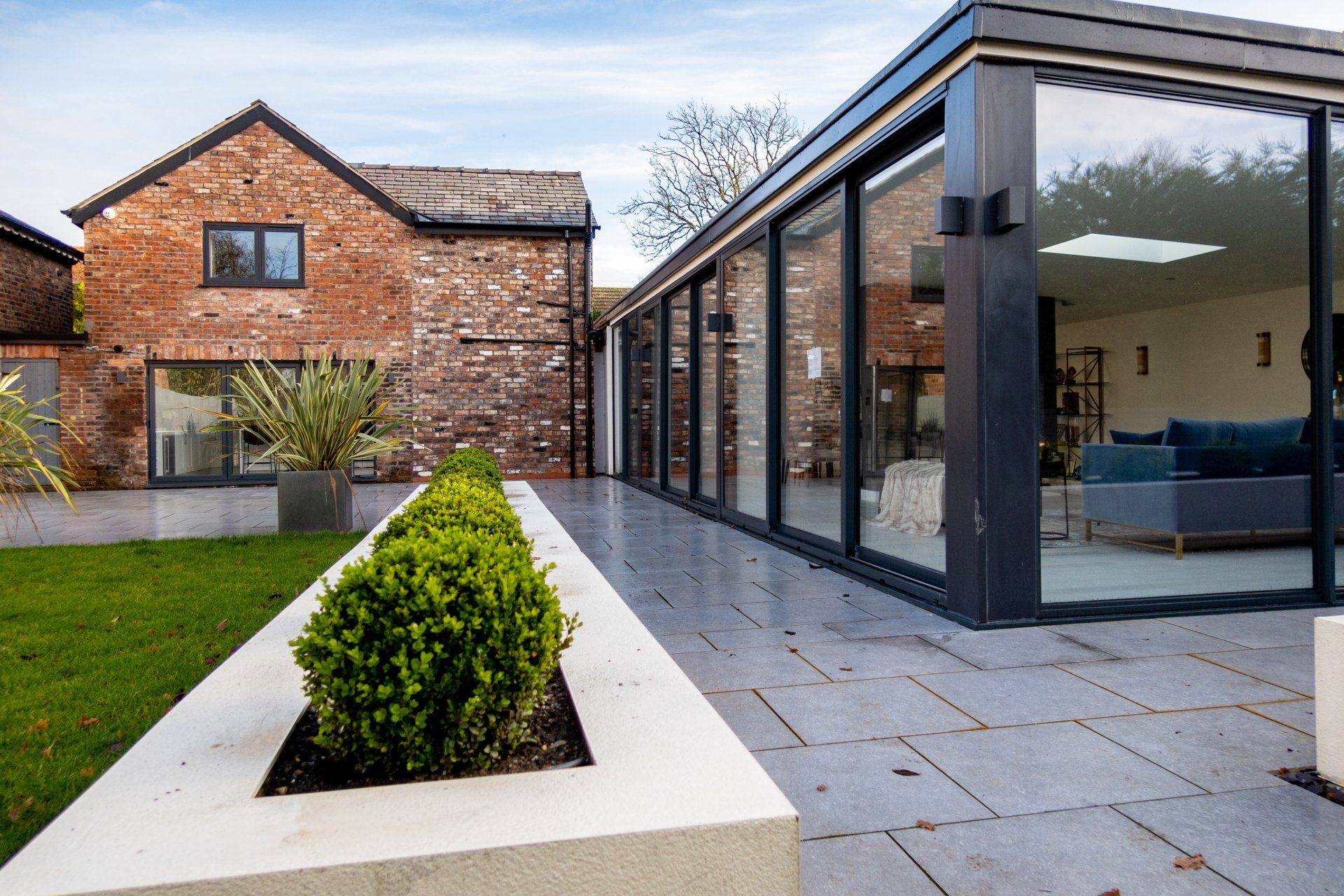
Video Tours have been increasingly popular over the last few years, but the Covid pandemic last year placed far greater focus on them, with benefits extending to include practical & operational factors in addition to the marketing value for both estate agent & vendor. Estate agents have had to find ways to offer video, or other virtual viewing options, with 2 main options available: 1) Video tours are tried and tested, but must be filmed in a way that engages and encourages the viewer to watch all the way through the property 2) Virtual Reality (VR) or 360˚ photography is the other solution available. It’s great tech, which we tested a few years ago before deciding that video is the better option. Things have moved on & improved since then, but whilst VR is fantastic technology in the right situation, it doesn’t work well in residential property for 2 reasons: a) It’s hard work for the viewer. Looking at technology from the end user’s point of view is always a good idea! The trouble with VR when looking through a potential new home is that it’s very easy to get ‘lost’! You don’t always know where you’ve been & where you should go next once you’ve seen each room, and having to click on the next hotspot doesn’t always give you the result you want. Compare the experience with sitting back and pressing ‘play’ on a video tour & you’ll see that video offers a far easier experience for the viewer. b) As mentioned above, property media must engage the viewer - if people don’t watch it then what’s the point? If you think who knows more than anyone about engaging consumers, it’s the social media companies like Facebook, Instagram & Twitter etc. Have a look through these feeds on your own accounts … how much of their content is VR, compared to video? You rarely see VR on social media, as they know that consumers don’t engage with it. Either we’re not ready for it (we don’t generally have a VR headset to hand!) or we just don’t want it for some other reason. Social media companies have adopted video as their preferred media type, and for marketing purposes, if you want to engage your market, you should too. That's not to say that there's no place for VR in residential property marketing, but you need to consider which tool to use for the goals you're trying to achieve. Once someone has decided on a property, or narrowed their options down to a couple of homes, 360˚ imagery is a great tool that allows the viewer to study the property in depth ... look at room sizes & work out whether their furniture will fit. It's a neat solution to be able to offer, but expensive & time consuming when you consider that these viewers are already sold on what you're showing them. In part 2 of this blog we'll look at the points to consider in order to produce an engaging video, that viewers will enjoy and that will represent your business in a professional way

Video is all about marketing ... both for individual properties and your estate agency business as a whole. Video tours are proven to get better results for your vendors, so it's no wonder that more homeowners prefer to use an agent who offers the service. Making potential clients aware of the benefits further enhances your chances of winning those new instructions, so we're introducing new weekly results videos, free for clients, to highlight successful sales. Designed for social media, they provide regular content that gives viewers another reason to choose your estate agency ahead of the competition:

Andrews Property Group Group Chief Executive, David Westgate has published figures showing viewings were up 6.5% in October vs. September, and that a third of viewings were conducted virtually (https://thenegotiator.co.uk/third-of-of-sales-viewings-are-now-online-says-leading-estate-agency/ ). Our own figures (for online viewings only) also show a small increase for the month (up 2.3%), but what is remarkable is the comparison against the same month last year. 2020 has been the year that the property industry embraced video, for obvious reasons, but the extent to which habits have changed might surprise many. Views of our video tours in October this year are 337% higher than the same month last year which, as you can see, follows the trend started back in March. Perhaps even more surprising, is that there's still a relatively small percentage of estate agents offering video/virtual viewings. The demand from the public is clearly there, and continues to grow, so agents with the capability to offer quality video have a clear advantage when it comes to winning instructions & then marketing those homes.
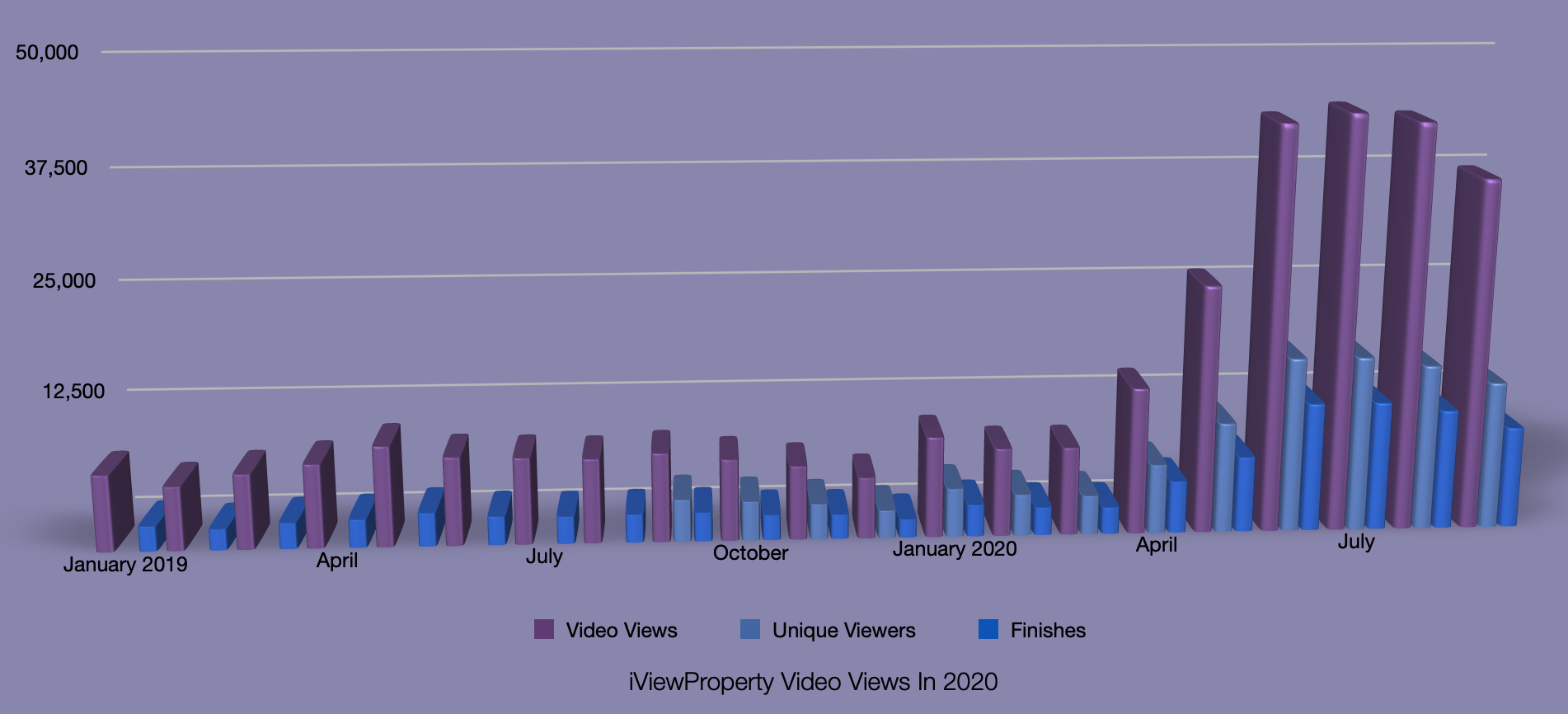
A slight dip in the numbers from August, but September's viewing figures are still about 4 times higher than the same month last year. The focus on video as a result of the Covid situation continues, but estate agents are now seeing the marketing benefits, rather than just relying on virtual viewings as a tool to show homes during lockdown. Here's the month in numbers as we've experienced it here at iViewProperty: 142 Properties filmed 38,189 Unique video views 79% Average watch time 25,234 Smartphone views (the most popular device) 46 Days, 2 hours & 41 minutes The total time spent watching iViewProperty Video Tours 16,457 Unique viewers
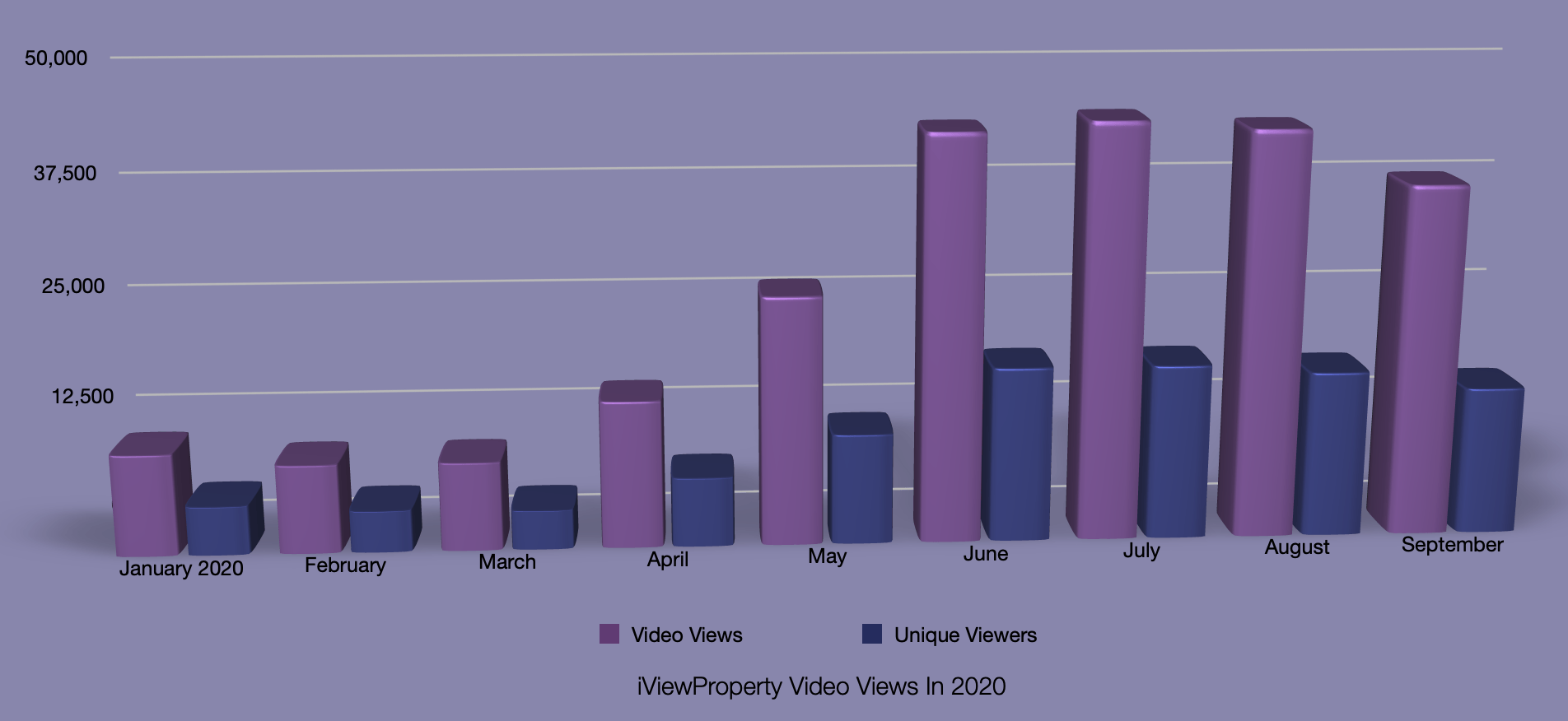
Video tours have been part of property marketing for years now (we started producing ours in 2011), but the lockdown & ongoing social distancing restrictions of 2020 have focussed far more attention on the importance of video for estate agents and home hunters alike. The main property portals have recognised the consumer demand, and placed greater emphasis on video content over the past few months, so let's have a look at what they've each been doing. Rightmove Having previously only provided access to property videos on their website, in April this year they quietly added functionality allowing users to view video & virtual tours to their mobile app . They then started advising home hunters on how to continue their property search with virtual viewings , and showed estate agents how to share video to each listing . OnThe Market Over the summer, as the market heated up, OnThe Market produced their ' Agent's Guide To Video Viewings ' and used social media to promote the tool
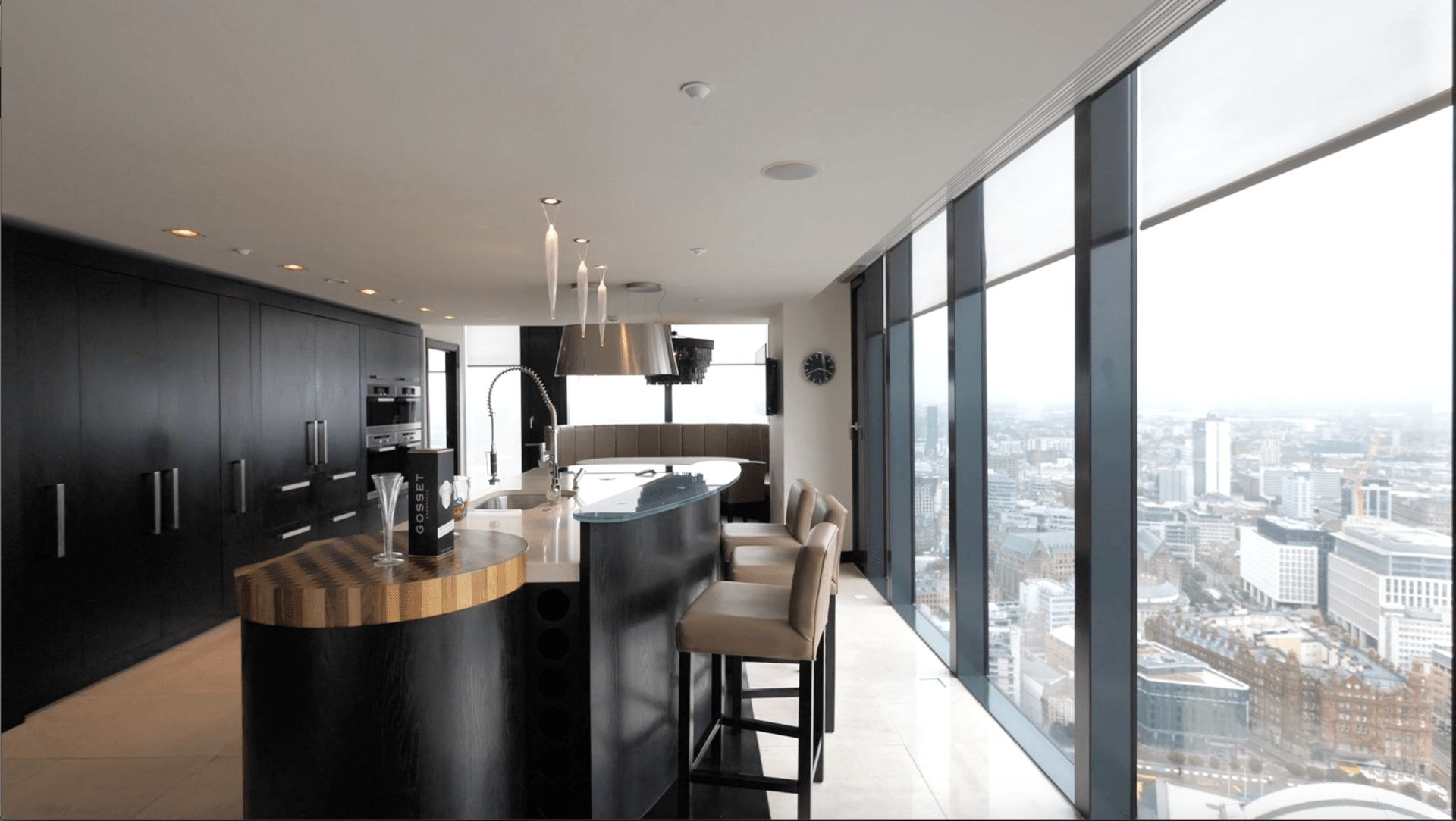
The incredible market we've seen since the Covid lockdown ended has continued apace through what is normally one of our quieter months. August volumes traditionally drop as people take a break & enjoy the school holidays, rather than focus on moving home, but the combination of foreign holidays being cancelled, new lifestyles being considered and the Stamp Duty holiday has led to a much more active period than usual. Here's the month in numbers as we've experienced it here at iViewProperty: 142 Properties filmed 44,000 Unique video views 78% Average watch time 28,537 Smartphone views (the most popular device) 50 Days, 19 hours & 26 minutes The total time spent watching iViewProperty Video Tours 1,332 Views of our most watched video tour (Beetham Tower Penthouse for Savills - see below)


